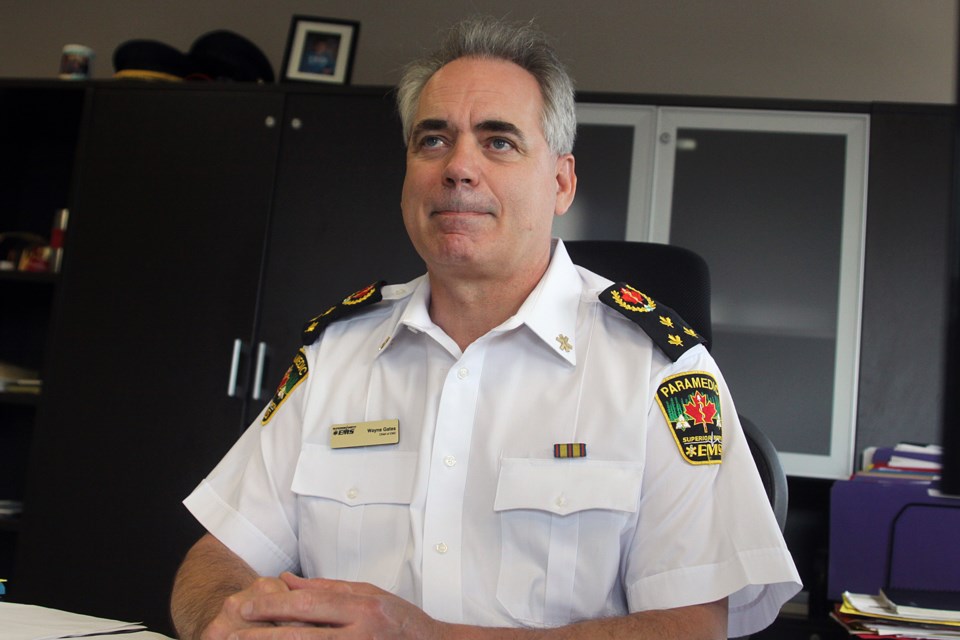THUNDER BAY – Skyrocketing numbers of 911 calls are creating an emergency situation for Superior North EMS.
The paramedic service will be going before Thunder Bay city council next Monday night, requesting $315,000 to cover the operating cost for one additional ambulance to run a 12-hour shift every day starting July 1.
Superior North EMS chief Wayne Gates said there are several different factors that are driving up the emergency calls.
“There are the baby boomers that’s an aging population, people are getting sicker. In Thunder Bay we have some socioeconomic challenges,” Gates said on Thursday.
“We’re sort of being hit by a few different issues that are really causing this call demand. For the future, it doesn’t look like it’s going to slow down at all. In fact, it’s probably going to continue to rise.”
Emergency calls have been steadily on the rise, spiking from 21,000 in 2012 to more than 26,000 in 2016, with projections of more than 28,000 this year.
In an attempt to address the increasing demand, Superior North EMS at the beginning of April implemented a new deployment model that has a minimum of five ambulances on duty during times of low call volume and a maximum of eight during peak call volumes. The strategy also involved the reduction of non-urgent patient transfers, which have decreased by 63 per cent.
Since the new deployment model was launched, there have been 60 code black occurrences where an ambulance was not available. Those occurrences, nearly one per day during April and May, averaged 20 minutes with 11 lasting longer than 30 minutes.
Those have led to close calls over those two months.
“A close call is when a true serious life-threatening emergency did come in and no one was available,” Gates said. “We’ve had a few of those close calls. Fortunately, we were lucky there wasn’t an impact on the patient outcome but those close calls are starting to increase because we don’t have units available to respond.”
The unit hour utilization – the amount of time ambulances respond to calls, have patient contact, provide patient care and transport to hospital – has exceeded 50 per cent during peak times, with the rate ranging from 25 to 40 per cent during low call volume times.
Gates said the current rate is not sustainable, with about 35 per cent considered the optimal rate.
“Our paramedics are essentially running non-stop. We have to give them some relief,” Gates said. “With my counterparts in southern Ontario, they are quite surprised how high our (unit hour utilization) has gotten.”
The expansion of another ambulance is estimated to reduce the rate to the 37 to 45 per cent range.
Initiatives developed in an attempt to lower 911 demand include the community paramedicine program, which has saved 330 calls per year as clients enrolled in the program have had a 40 per cent decrease in emergency calls.
As well, a Ministry of Health funded program at the Thunder Bay Regional Health Sciences Centre has a dedicated off load nurse positioned for 12 hours a day to help receive patients and clear paramedics from delays.
The resolution proposes utilizing the stabilization reserve fund to provide the $315,000, though the net amount is expected to be $252,000 with other district municipalities served by the paramedic service contributing 20 per cent.
The report going to council states Superior North EMS is working with North West Local Health Integration Network to secure funding to continue the paramedicine program, as well as working towards an initiative to address non-urgent transfers.
